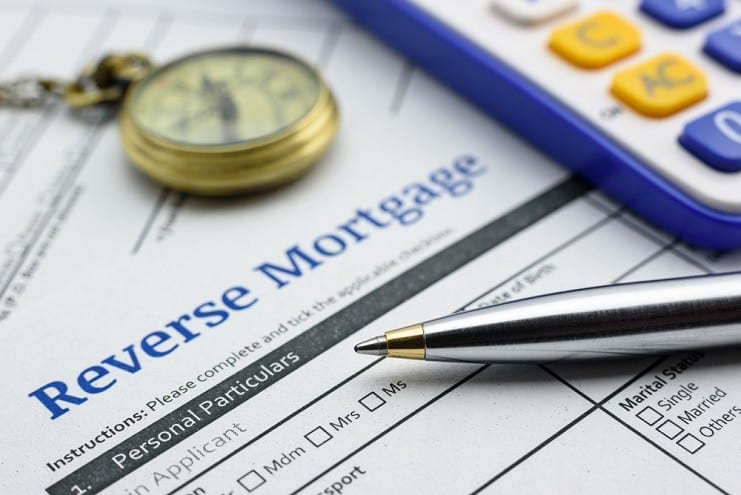Get Cash From Your Home with a Reverse Mortgage, And Stay Put

Home equity is the most valuable asset of many older Americans. Even after the big bull market, Americans real estate holdings (primarily through their homes) are more valuable than their stocks. But that real estate wealth doesn’t help pay bills. You can sell a small part of a stock portfolio to pay medical bills or other expenses. But it is tough to do that with home equity.
One way for seniors to get current use of their home equity is a reverse mortgage.
In a reverse mortgage, a lender gives the homeowner a lump sum, line of credit, or fixed payments for either life or a period of years. This loan is secured by the home. Repayment is due only after the home is sold or the homeowner dies. The lender gets the amount due (principal, costs, and accumulated interest) from the sale proceeds. The borrower still is the homeowner and is responsible for paying property taxes and insurance and keeping the home in good repair.
One of the strongest desires of older Americans is to stay in their homes for as long as possible, and you can see how the reverse mortgage allows this.
Reverse mortgages took off in the late 1980s when the quasi-government mortgage insurer Fannie Mae and the Federal Housing Administration added reverse mortgages to their insurance programs.
But reverse mortgages have costs, which are not equal on all mortgages. Because of the costs, the reverse mortgage is not for everyone.
Costs to get started can include application fees, appraisal fees, and credit reports. Actual loan costs include origination fees, closing costs, insurance, and a monthly servicing fee. Of course, there is interest on the loan. The costs usually can be added to your loan balance.
Some lenders also offer an “equity sharing reverse mortgage.” In return for a larger loan than you ordinarily would qualify for, the lender gets an additional 10% or so of your home equity when the loan is paid. This might be a good deal if you live for a number of years. But the lender gets the extra 10% whether you die next year or in 10 years. If you own the home only a few more years before the loan is paid, the equity share can amount to an annual interest rate of 30% or more. For this reason, Fannie Mae recently announced that it no longer will guarantee equity sharing mortgages and probably won’t take its full equity share in some outstanding reverse mortgages.
There are three factors that determine how much a reverse mortgage will end up costing. One factor, of course, is the total cost of obtaining the mortgage. Another factor is the interest rate. The third factor is how long you live.
Lenders decide how much of a loan you qualify for based on when they expect to be paid. Since the loans usually are paid after the borrower’s demise, the life expectancy of the borrower is the key factor. That’s one reason why it often doesn’t make sense to borrow at a relatively young age. Reverse mortgages can be made any time after age 62. But you would not get a large loan at that point in life. The lender will have to wait too long to get paid. It is better for most people to wait until their late seventies before considering a home equity loan.
The loan balance never can exceed the value of your home. That means if you live a lot longer than the lender expected, interest on the loan won’t be charged for the later years. That’s why lenders pay attention to life expectancy and are careful not to lend too much.
But you don’t want to wait too long to borrow. That’s because the cost of obtaining the loan are relatively small if spread out over years before they are repaid. But if the loan lasts only a few years, the fees make the annualized cost of the loan very high.
State and local governments offer some reverse mortgages. These loans tend to carry low costs, and the balance is unlikely to equal the home’s value. These loans generally are available only for certain purposes, so the amount that can be borrowed is limited. But private lenders don’t limit costs and have higher borrowing limits. On these loans the balance could exceed your home equity over time.
Your safest bet often is to take a loan under the FHA-administered Home Equity Conversion Mortgage (HECM) program. In these loans the FHA tells the lender the maximum amount of the loan based on the borrower’s age and the home’s value. The FHA also guarantees loan advances will be made regardless of how long you live and what happens to your home’s value or to the lender. The FHA requires a borrower to meet with a counselor before the loan is made.
When comparing loan offers, the three key factors to review are: the amount lent to you, the costs of the loan, and the estimated equity left for your heirs after the loan is repaid.
In most cases, you’ll choose between an HECM loan insured by FHA and a HomeKeeper loan insured by Fannie Mae. Contact your area Office on Aging to get their lists of local reverse mortgage lenders. Then contact the National Center for Home Equity Conversion (NCHEC) for their list of approved lenders and counselors. Or check the NCHEC web site at www.reverse.org. You also can get detailed explanations of reverse mortgages from the AARP site at www.aarp.org/revmort/.
Before entering into a reverse mortgage, consider your options. These include selling to your children, selling and moving, qualifying for a home equity loan, and contacting your local Area on Aging for sources of financial aid. In many cases, each of these options would be less expensive than a reverse mortgage.
![]()





